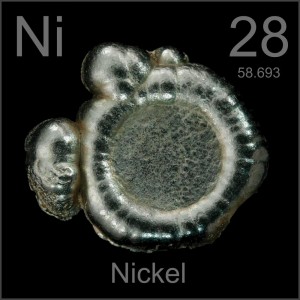Between the eighth and the 16th century, western alchemists searched for the philosopher’s stone — a substance capable of transforming lead into gold. This mythical substance remained out of their reach. Turning lead into gold would require changing the basic structure of the atoms involved. More specifically, it would require altering the number of protons in each atom’s nucleus, which is what is most often used to define an element.
Today, scientific advances have made elemental transformation possible, common even in particle accelerators and nuclear reactors. But can — as the alchemists suspected — an element look and behave like another without a fundamental change in its atomic composition? In a recent paper, published January 12 in Physical Review Letters, a team of Yale scientists shows that this is in fact the case. To arrive at this answer, the researchers had to shift focus from protons to their smaller, negatively charged counterparts: electrons.

Through a newly developed technique, the group configured and populated particular electron orbitals in nickel atoms. These orbitals constitute an essential part of what determines an element’s properties. “In the case of nickel, and other transition metals, these orbitals are particularly interesting because they determine the element’s superconductivity and magnetism,” said Ankit Disa, physics graduate student and co-author of the paper.
For their experiments, the researchers relied on a relatively new form of crystal fabrication called molecular beam epitaxy. This method allows scientists to deposit molecules one atomic layer at a time, enabling the creation of lattices with particular layered structures that do not occur naturally. The team created a lattice with three ultrathin layers: First, a base layer of titanium oxide, which is an alkaline or rare earth metal. Next, nickel oxide, a transition metal. And finally, an insulating third layer of oxygen.
The combination of these three materials creates an asymmetrical environment around the nickel oxide layer. This asymmetry has two measurable results: First, an electron is transferred from the titanium to the nickel oxide, distorting the lattice. Second, an electron drops from its original d orbital, causing the ratio of electrons across orbitals to resemble the configuration found in copper rather in bulk nickel oxide.
After demonstrating that such electron manipulation is indeed possible, the team predicted that the system could be further modified by exchanging oxygen for different insulating materials. In principle, more effective insulators could increase the electron polarization, or the ratio of electrons in different orbitals. Electrons in the nickel layer would then behave and interact with their environment as if they were in a copper atom.
The group’s results also indicate a mechanism by which scientists might engineer other new materials. “We can use this design to tune the orbital configuration in between, and access a whole range of configurations,” Disa said. By varying elements used in the structure, you could potentially fabricate orbitals with magnetic, superconducting, or optical properties tuned as desired. Such capacities could benefit the manufacturing of highly efficient technologies.
Additionally, these results pave the way for future researchers to analyze the fringes of electron-controlled atomic properties. We are quick to define elements by a standard number of protons, but as Disa’s paper shows, electrons can be equally influential in determining elemental properties. Though much research has yet to be done, variation in structure and orbital shape could be used to explore properties that were previously only imagined.
